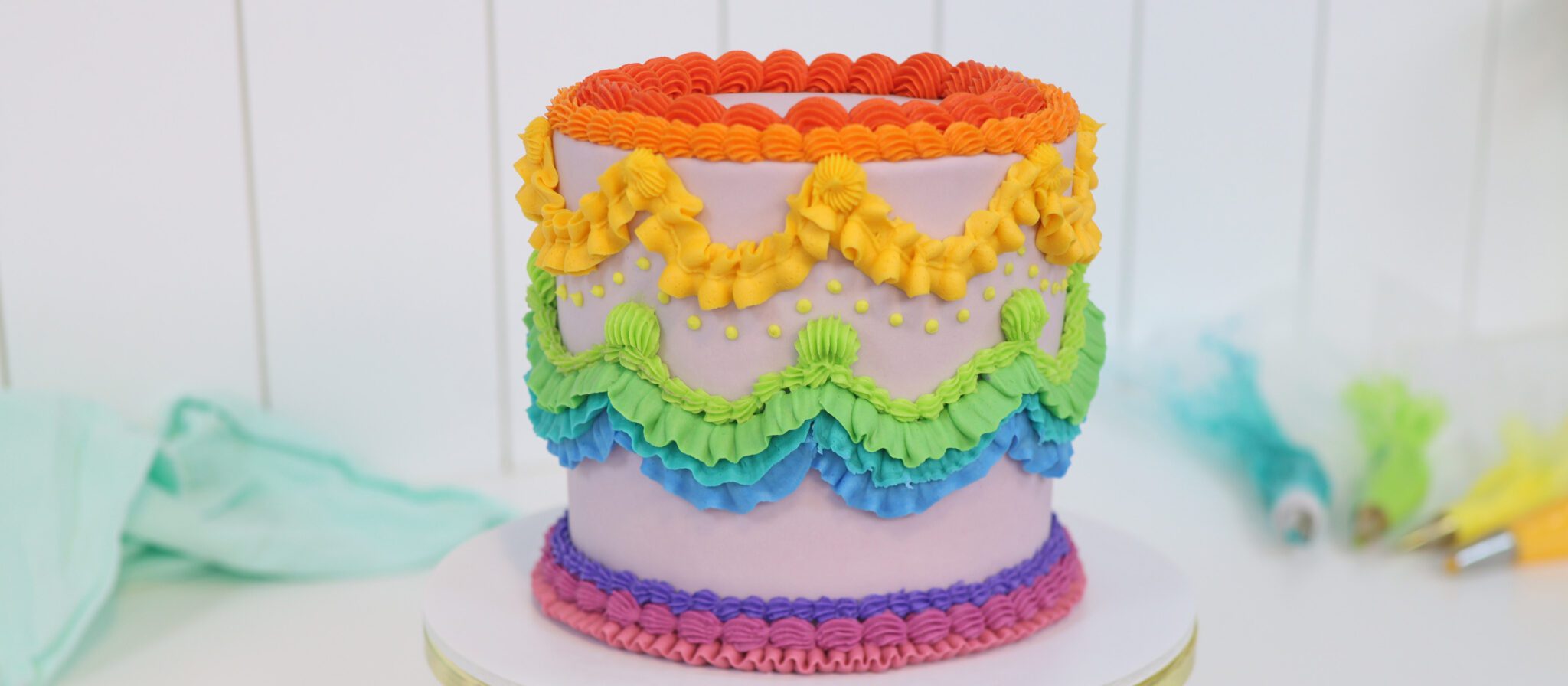
Vintage cakes or Lambeth cakes have been trending for a while because the over the top piping is so eye-catching and unique to this style. In this tutorial I’ll share 10 secrets for success with vintage cakes!
Neat vintage cakes begin long before you even pick up a piping bag! When you do pipe onto the cake, you need the frosted cake to be firm. If the frosting is still soft, the pressure of your piping tip can damage the frosting. After you’ve smoothed the frosting on your cake, chill the cake for the neatest vintage piping. About an hour in the fridge is ideal but thirty minutes in the freezer will work instead. I use my 4 Minute Buttercream to frost all of my cakes because it gets firm when it's cold but softens as it warm up.
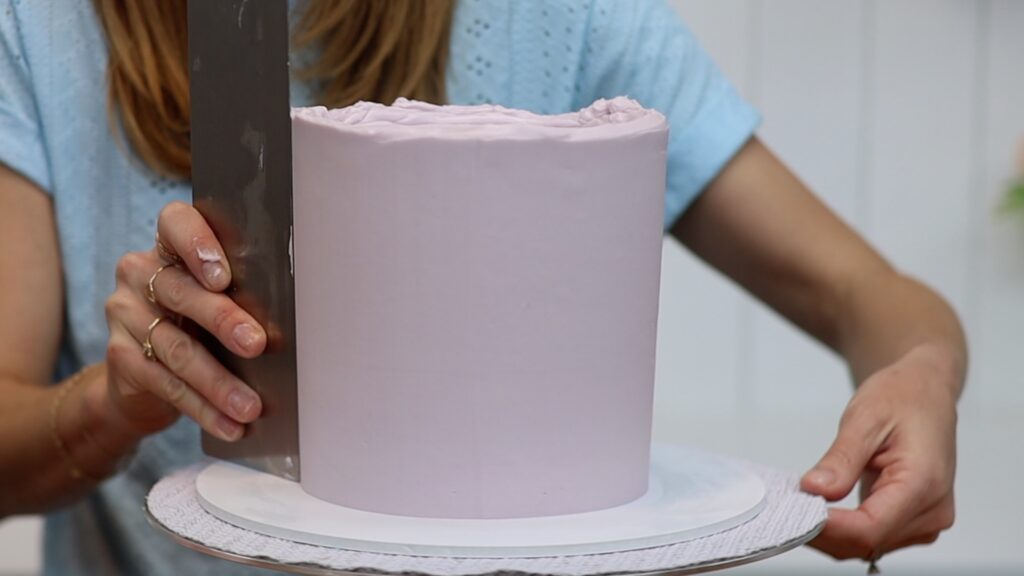
Draw your vintage cakes before you start piping onto them. This will help you visualize if there’s room for everything on the cake and that there are no big gaps. I like to write the piping tip numbers that I’m going to use along one side of the sketch. On the other side I list the colours I'm going to use for each part of the piping.
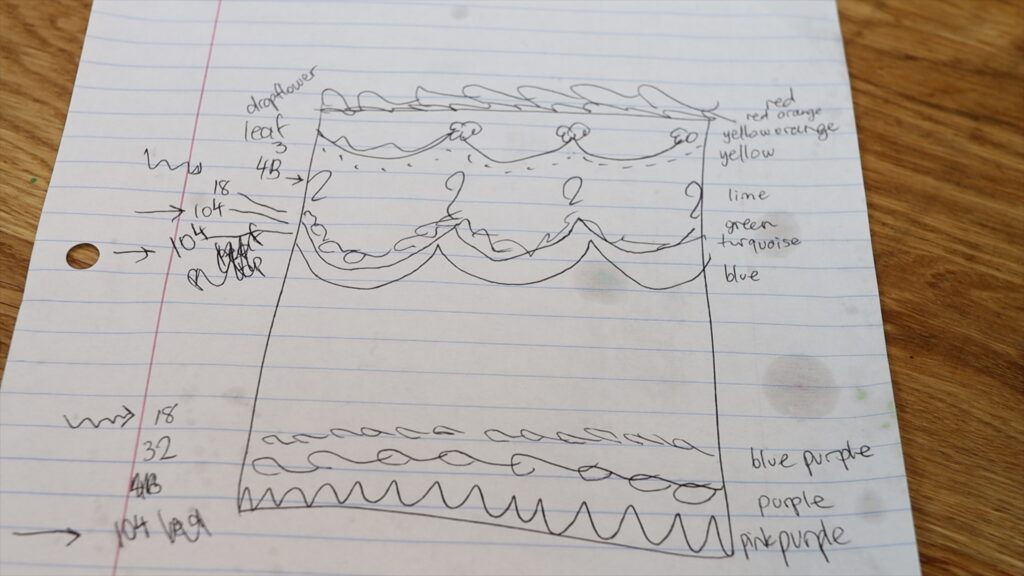
This way I can see which tips I’ll need to use multiple times and I'll put couplers into the piping bags filled with those colours. For example, on this cake I’m going to use a #104 tip for purple, blue, and turquoise so I’ll put couplers in those piping bags. Couplers allow you to switch the piping tip quickly and easily between different bags.
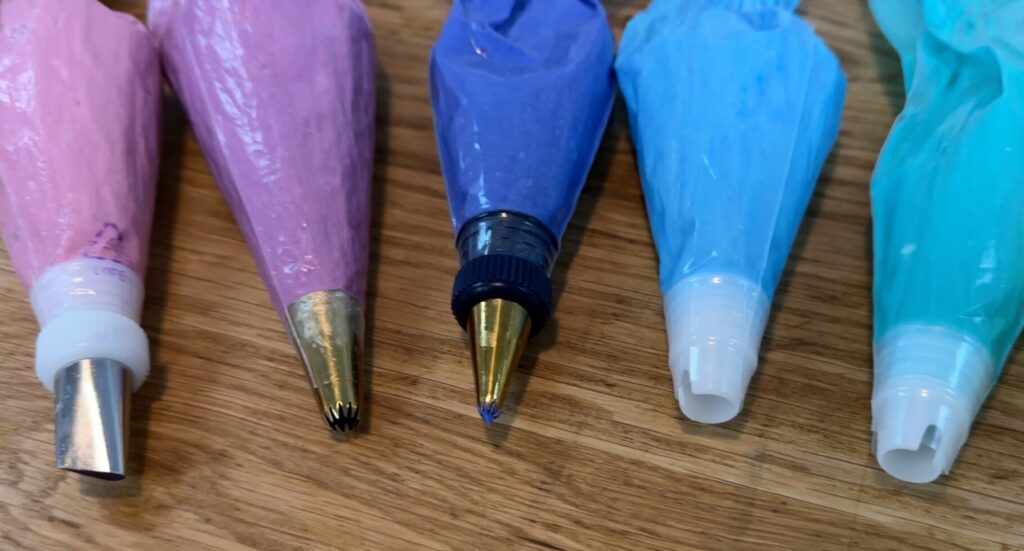
When the frosting on your cake has chilled and set, outline the main parts of your design. You can do this with toothpicks or cookies cutters or both. Start by cutting a circle of parchment paper or wax paper or baking paper that’s the same size as your cake. The easiest way to do this is to draw around the pan you baked the cake in. Fold it in half three or four times and then unfold it and place it on top of your cake.
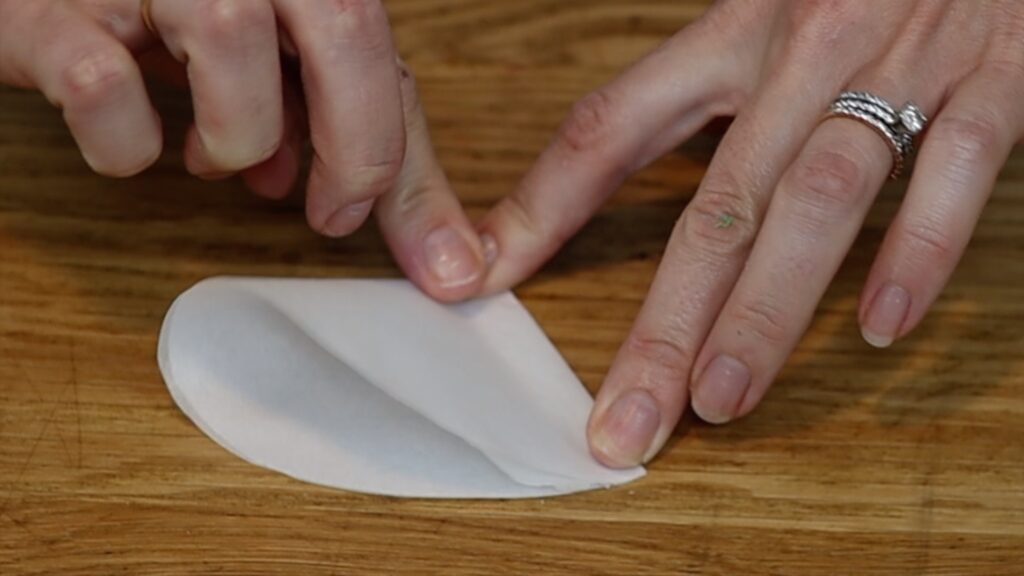
Use the creases in the paper as guidelines to poke toothpicks into the side of the cake. You should have a toothpick below each crease and you’ll see how this is helpful in a minute.
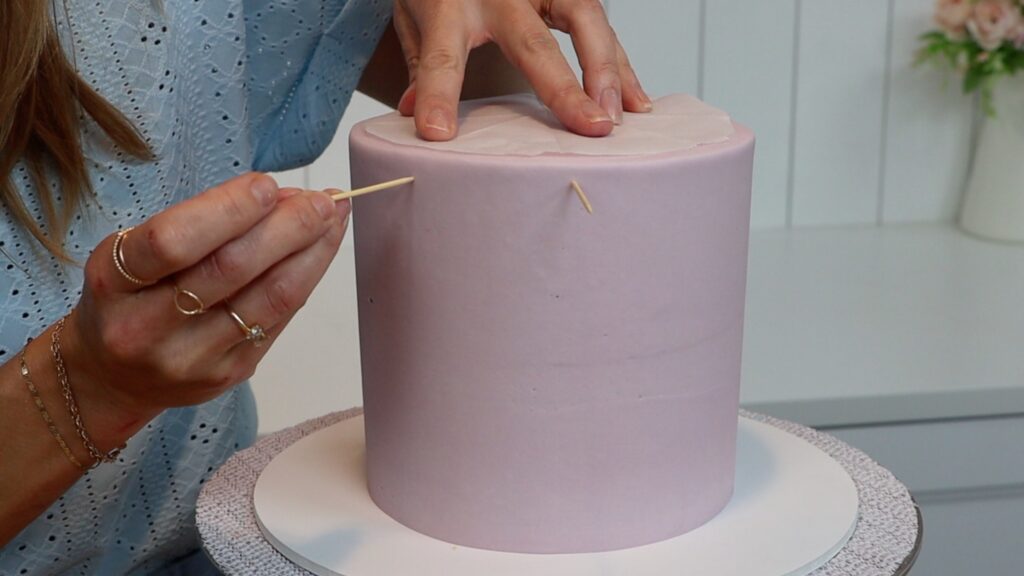
For even more guidance as you’re piping, use a round cookie cutter to mark curves into the frosting. You’ll follow these curves with your piping tips later.
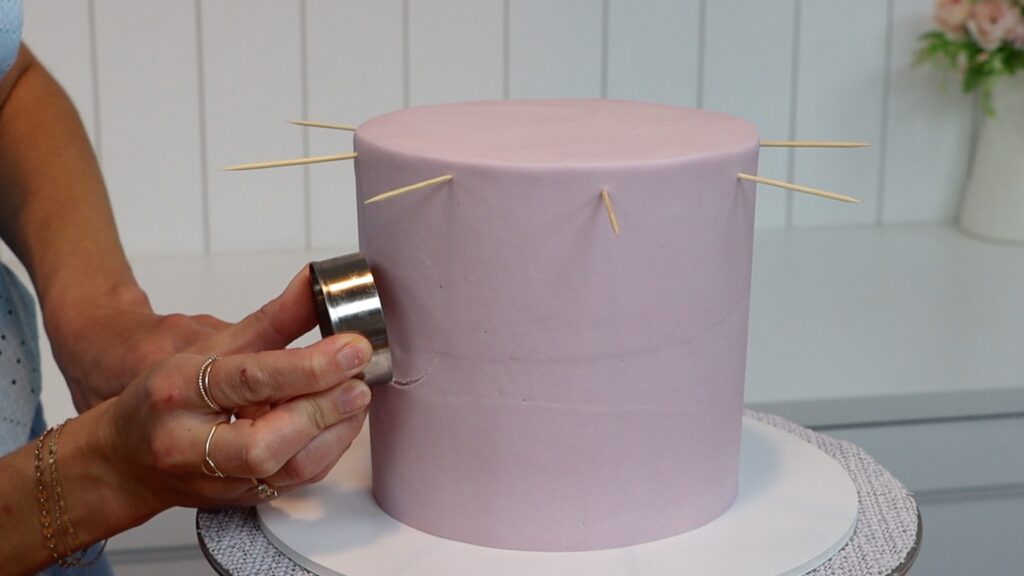
Use a variety of piping tips and colours for the most interesting design on vintage cakes. For this cake I’m using seven piping tips and 11 colours, which is the most I’ve ever used. For this vintage heart cake I used just three piping tips and two colours, which still creates some nice interest.
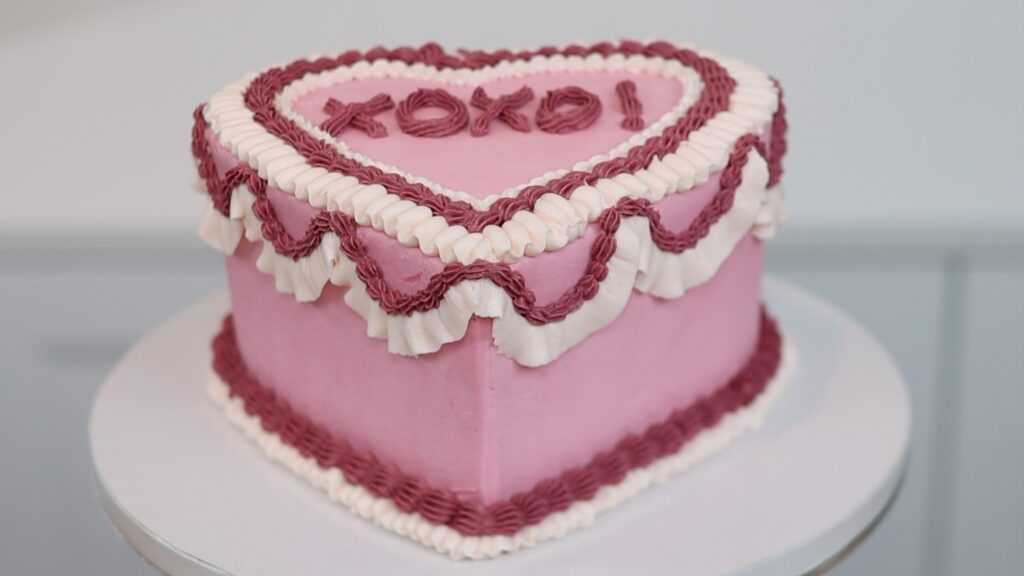
Once you have your piping bags and colours ready, it’s time to pipe! The fifth secret for vintage cakes is to use variety in your piping. Use different techniques for different styles of piping, even if those techniques use the same piping tip. For example, a petal tip can be used for ribbons by holding it horizontally and wiggling it up and down. You can see this in the pink piping in the photo below. The same piping tip can be used for ruffly swags by holding it vertically, with the narrow part of the teardrop shape pointing down. As you pipe, wiggle your wrist to allow the frosting to ruffle. The blue piping below is an example of this piping technique.
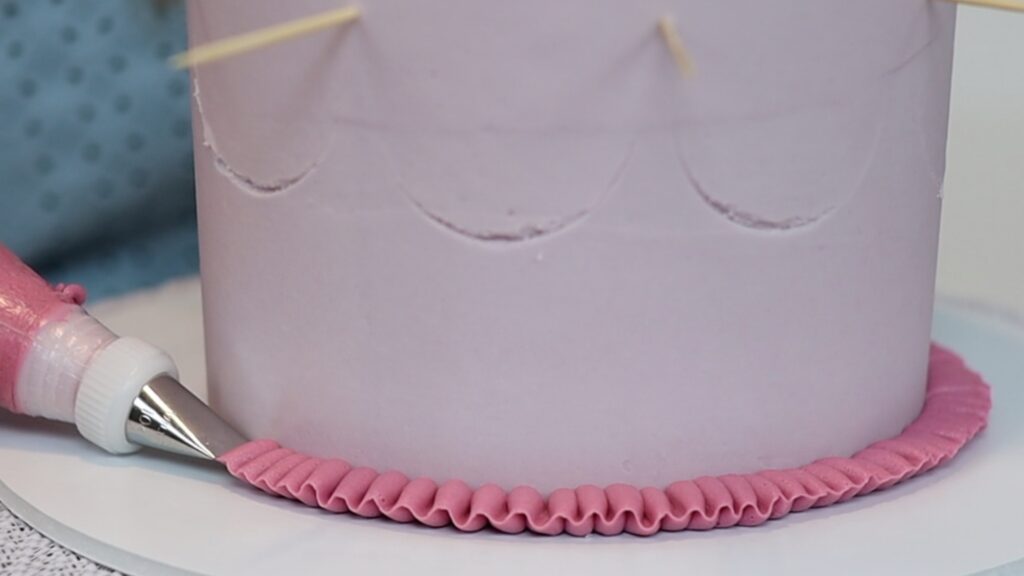
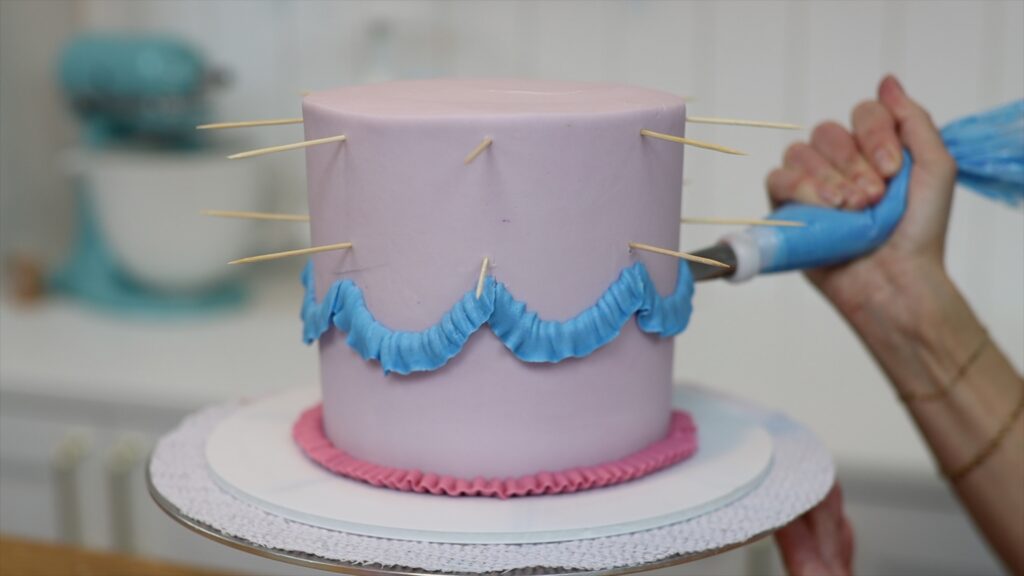
You can also create more variety by using the same technique with different tips. For example, these blue ruffles were piped with a petal tip but these orange ruffles are piped with a leaf tip:
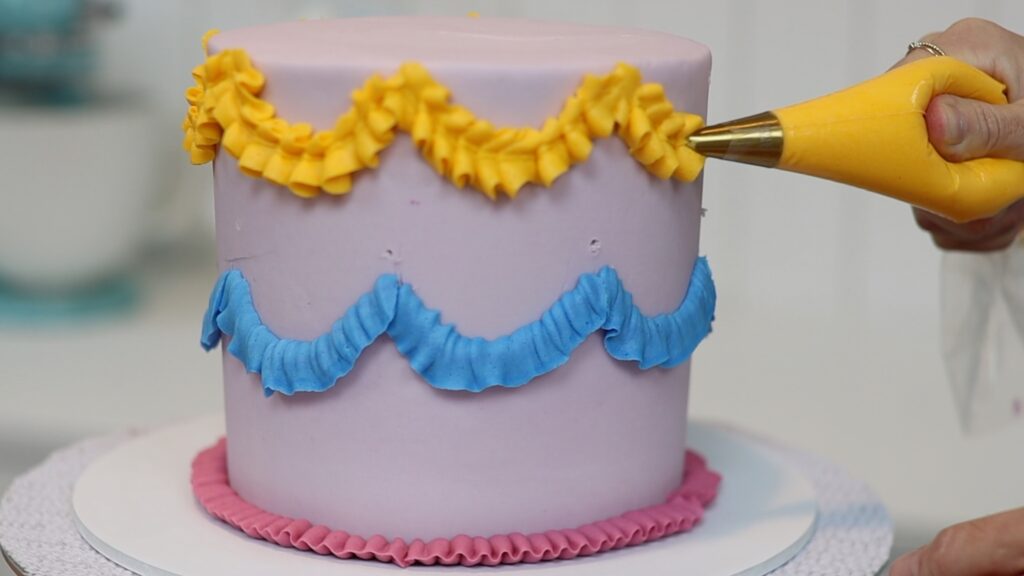
Layering is my favourite part of vintage cake designs. Using different shapes and sizes and colours of piping side by side is a really unique technique that you don’t see in many other designs. Actually, I can’t think of any other styles that use this!
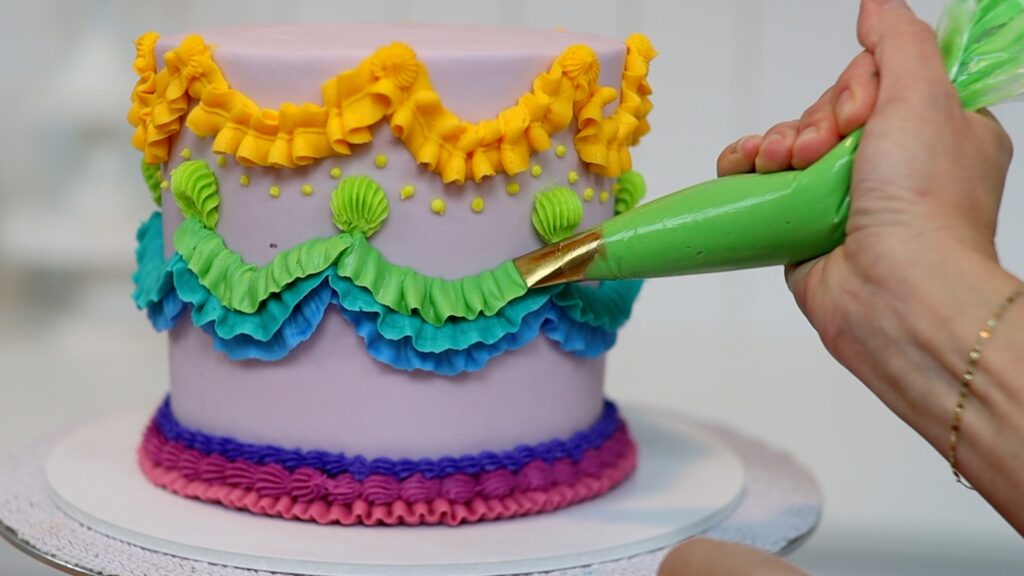
The other trick that's really important for layering piping is coming up next!
Before layering piped details on top of each other, chill the first detail. It will set after about 20 minutes in the fridge so that it holds its shape even as you pipe on top of it. The weight of the next piped details won’t make it bulge or sag and the colours won't mix together. Also, you won't damage the old piping if you brush against it with this next piping tip. And if you have shaky hands like mine, you can rest the piping tip on the piping you’ve chilled to steady your hand and you won’t damage that chilled piping.
Repetition is key to vintage cakes! Use the same style of piping in different places on the cake, like the shell piping in purple at the bottom and again in orange at the top:
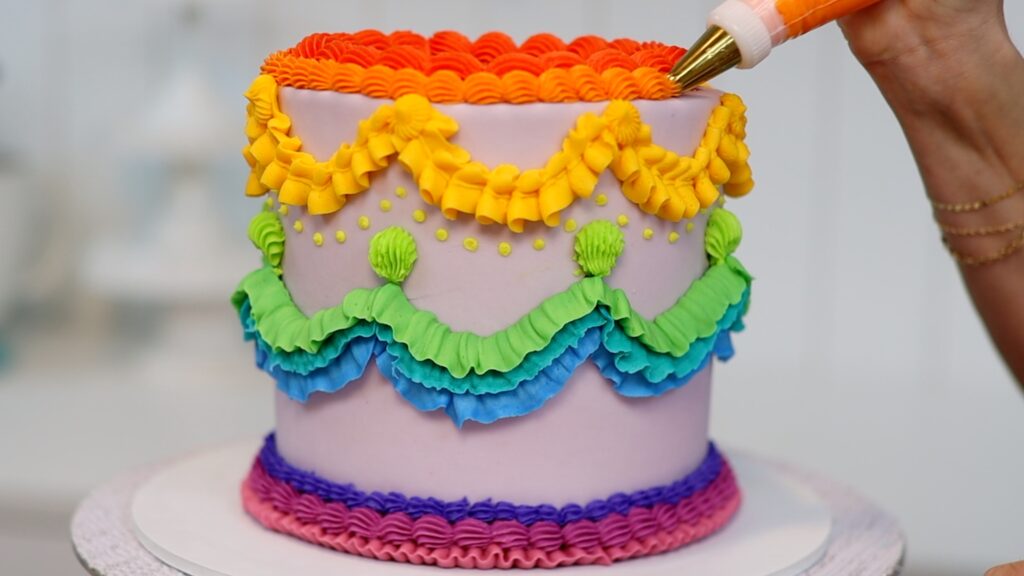
Even if you use lots of different colours and styles, repetition brings everything together by the end.
I love vintage cakes with all their piped details just as they are. But if you want to add even more glamour, add cherries dipped in edible glitter or piped flowers.
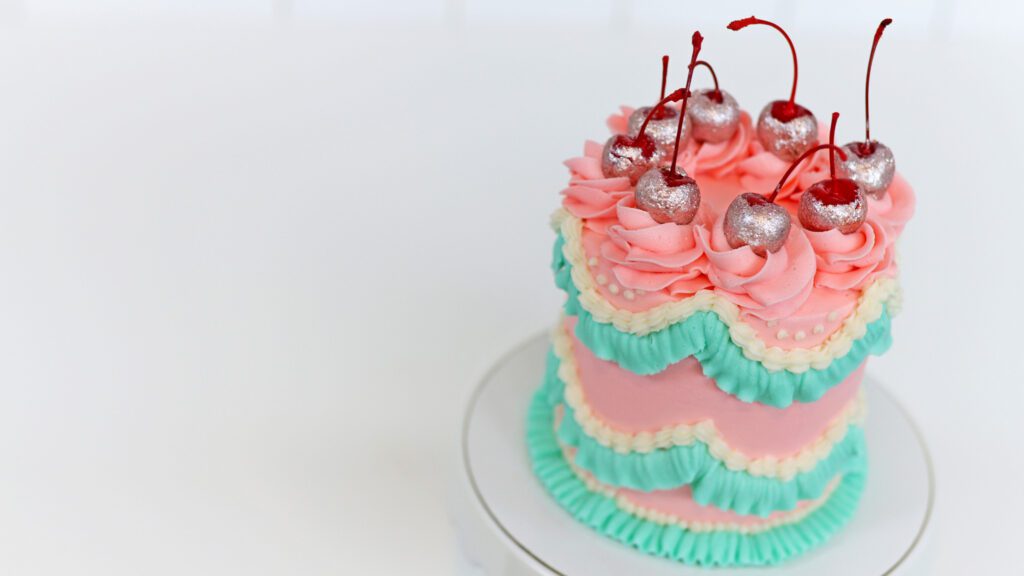
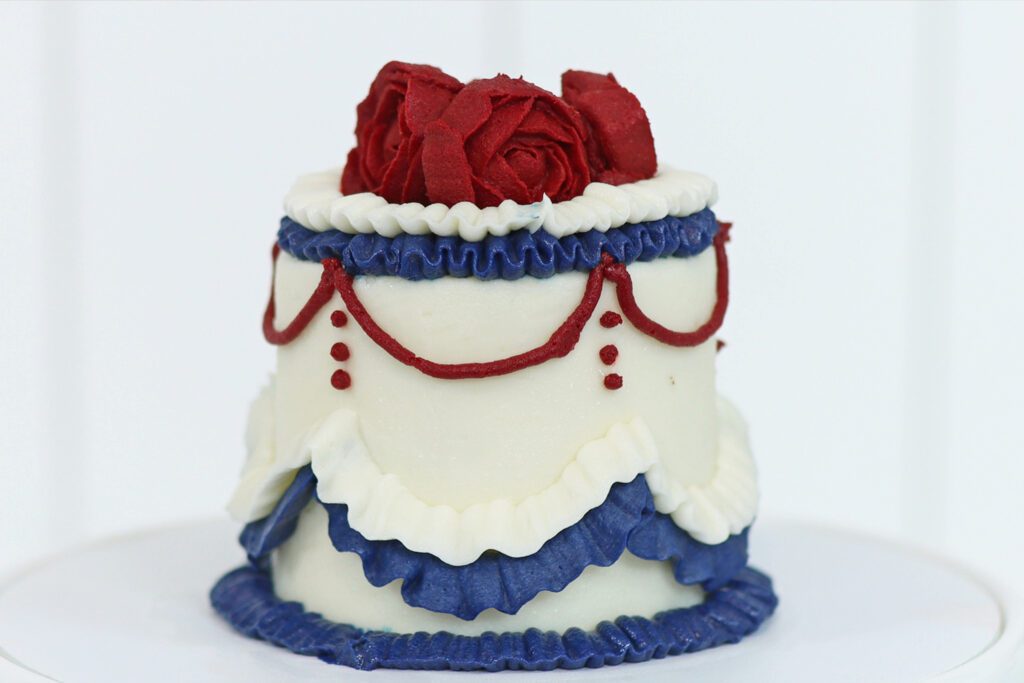
Finally, make sure your cake is as delicious as it looks by storing it properly! Vintages cakes should be refrigerated to preserve the heavy piping. Take them out a few hours before serving so that the cake and frosting warms up to room temperature. This takes about two hours for small cakes or four hours for large cakes. Buttercream cakes taste best at room temperature!
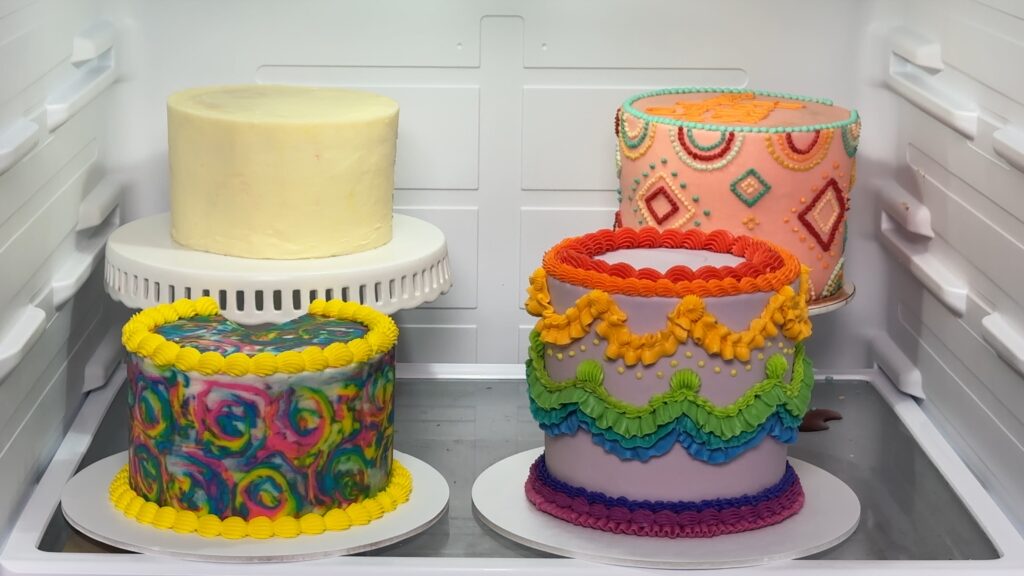
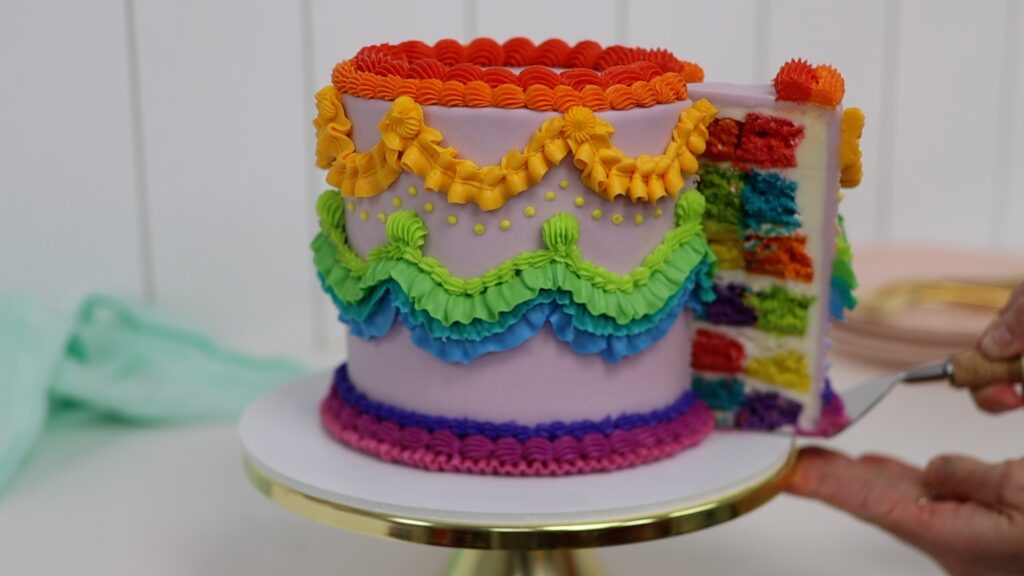
I hope this tutorial has been useful! I'd love it if you checked out my online cake school! You can take courses on baking and decorating cakes or choose the All You Can Cake membership for access to everything on my cake school to really take your cake decorating to the next level!
You can also watch a video of this tutorial on 10 secrets for vintage cakes:
